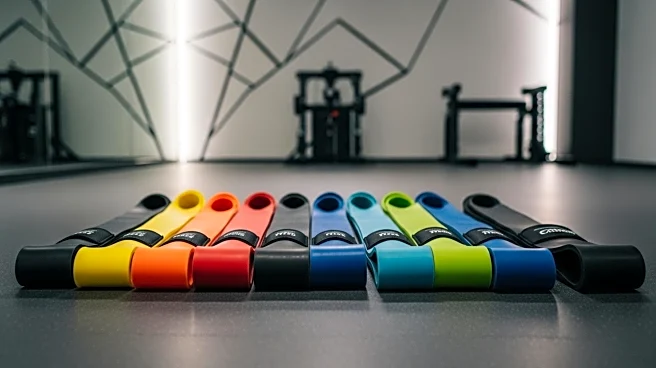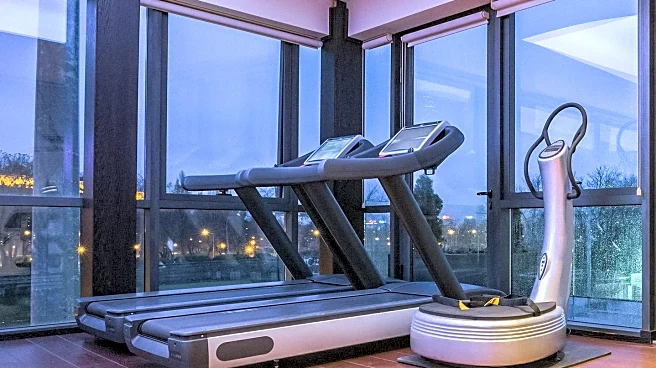What's Happening?
Power walking, a moderate-intensity cardio exercise, is gaining recognition for its health benefits and is recommended by Jojo Kelly, an ACE-Certified Personal Trainer and Tone House Head Coach. This form of exercise involves walking at a challenging pace with shorter, quicker strides, engaging more of the body due to increased speed and arm swings. According to Kelly, power walking conditions the heart, improves endurance, and can lower blood pressure, as supported by a 2024 meta-analysis in the Iranian Journal of Public Health. It is particularly beneficial for beginners, older adults, and those seeking low-impact workouts. Power walking is also advantageous for cyclists and runners, allowing them to build mileage without additional stress. Kelly has designed specific power walking workouts that cater to various fitness levels, emphasizing the importance of monitoring effort through rate of perceived exertion (RPE) and heart rate zones.
Why It's Important?
Power walking offers a viable alternative to high-impact exercises, making it accessible to a broader demographic, including those new to fitness or with physical limitations. Its ability to improve cardiovascular health and endurance without the strain of more intense workouts is significant, especially for older adults or individuals recovering from injuries. The exercise's low-impact nature reduces the risk of injury while still providing substantial health benefits, such as improved mood and cardiovascular function. For athletes, incorporating power walking into their routine can enhance recovery by increasing blood flow and flushing out lactic acid, thus supporting their training for endurance events like marathons or triathlons.
What's Next?
Individuals interested in power walking can start by integrating Kelly's workouts into their routine, adjusting the frequency and intensity based on their fitness levels and goals. The Centers for Disease Control recommends 150 minutes of moderate-intensity aerobic exercise per week, which can be achieved through brisk walking. As fitness improves, participants can increase their pace and frequency, potentially using power walking as a warm-up for more intense sessions. Athletes may use power walking on recovery days between heavy training to aid muscle recovery and maintain cardiovascular health.
Beyond the Headlines
Power walking's growing popularity highlights a shift towards more sustainable and inclusive fitness practices. It underscores the importance of accessible exercise options that cater to diverse needs and abilities, promoting long-term health and wellness. The emphasis on monitoring effort through RPE and heart rate zones reflects a broader trend in personalized fitness, where individuals tailor workouts to their specific health metrics and goals. This approach not only enhances physical health but also encourages a more mindful and informed engagement with exercise.










